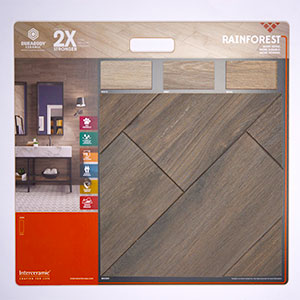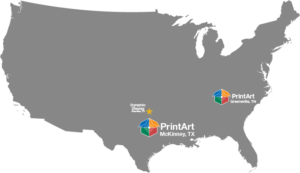Timber flooring can strike just the right note in any style of home – it looks natural, warm and rustic in a country cottage and, in a contemporary setting, it can add texture and create an organic feel. Moreover, in both modern and period homes, the various vinyl and laminated versions can be an excellent and practical choice.
Wooden flooring is under constant technical development; the latest ranges have tough, long-lasting finishes and are straightforward to install. There’s no need to worry about gaps between boards; the click-and-lock systems mean the task can be handled by an experienced DIY-er, although most suppliers will also offer an installation service.
All types of wooden flooring can be laid over practically any sub-floor, including floorboards, concrete, old tiles or a boarded surface, as long as the surface is sound, dry and flat. Reclaimed timber flooring, however, is a slightly different proposition as it won’t be neatly cut to size and it’s also difficult to judge what it will look like once it’s been finished. Take advice from the supplier on how much to buy and which finish choosing, and always ensure that you’ve bought enough – it will be tiresome to track down similar boards elsewhere. It’s also worth experimenting with cleaning and/or finishes on a spare board before installation.
As it is an integral part of the room and colour scheme, you should choose your timber floor at the start of the redecoration or refurbishment project. According to how light or dark the floor is, it can affect how paint and paper colours appear. That’s why it is important to look at a wide selection of Wooden Sample Boards when comparing one product against another. Sample Boards give you real, actual product to look at, feel and compare. It’s as good as seeing the final product and that is the purpose of good quality Sample Boards from PrintArt. Although some timber flooring, such as parquet, solid hardwood and reclaimed boards, can be darkened or lightened by sanding down and re-varnishing, it’s not a job you are likely to want to do very often.
Types of Timber Flooring
Solid Wood
Made from the named timbers, these are solid all the way through. Some types are suitable for installation as the structural floor without needing a sub-floor underneath.
Reclaimed Timber
This can be bought as bundles of planks, boards or panels from reclamation and salvage yards, or as whole floors from timber-flooring specialists. Prior to installation, reclaimed timber flooring can look very uninspiring. Once it’s laid, however, it can look incredible.
Multi-Layered or Engineered
A plywood or veneered base, built up with several layers of crisscrossed hard or softwood boards and topped with a layer of the named timber. The construction of this flooring gives it strength and stability, so it’s a good alternative to solid-wood flooring.
Laminate
Made by producing an image of wood on a layer of plastic, which is laminated to a board backing. Top-quality versions have convincing textured finishes and are hardwearing and tough. Inexpensive DIY-store versions may look flat and lifeless, and the “wood” finish may flake or chip at the edges of the boards.
Vinyl
Vinyl flooring is widely available in timber patterns. Luxury sheet vinyl can be a good choice in the kitchen or bathroom and is considerably cheaper than solid wood. Vinyl plank or block flooring feels harder underfoot but, as each floor is individually designed, it always needs to be professionally laid.
Suitability
- Timber flooring can be noisy, especially in upstairs rooms; use rugs to deaden the sound of footsteps in busy areas, and always use the insulation suggested by the installers.
- Reclaimed timber flooring is usually well-worn and is tough enough for most living areas, although you should avoid bathrooms and kitchens.
- Solid or engineered wood flooring is suitable for living rooms, dining rooms, halls and bedrooms.
- Laminates are suitable for living areas and bedrooms but avoid rooms with water, as seepage between the joins can cause planks to swell or discolour.
- Vinyl look-alikes are good choices for bathrooms and kitchens, conservatories and utility rooms, as well as for main living areas.
Styles and Grades
Timber flooring comes as planks (also known as boards), each of which can be made up of a number of strips. A plank with a three-strip design has three narrow strips running the length of the plank. The floor will have a random strip pattern when laid. Planks can vary in thickness, each depth being more suitable for certain bases. For example, the thickest planks, at about 22 mm, can be laid over joists as structural floorboards, while thinner planks, at about 7 mm to 15 mm thick are laid as overlay floors on to an existing smooth, dry sub-floor.
The surface finish of timber flooring is also given a grading. Premium or select grades are smooth, uniform and knot-free. Moving down the scale, grades referred to as “natural” or “rustic” are less uniform and, in many cases, more realistic and appealing. Only order your flooring when you have seen a sample of the exact plank – strip, colour, grade and finish.
Wooden Floors and the Environment
Timber flooring is generally acknowledged to be ecologically sound, providing it is produced using timber from sustainable forests. Reputable stores will only deal with manufacturers who use wood from certified sources. In the UK, the Forest Stewardship Council (FSC) scheme is widely recognised and includes a certified chain that tracks timber through every stage, from forest to retailer. For further details, visit fsc-uk.info or call (01686) 413916.
Trends
There’s currently a move away from narrow, pale woods, towards darker wood and reclaimed flooring. Oak is a perennial favourite, possibly due to its middle-range colour options, and the fact that it blends with virtually any colour scheme or style.
Extra-wide boards and planks (up to 76 cm wide in some cases) are becoming favourites too, many with distressed finishes such as “smoked” effects. For laminate flooring, choose designs with V-grooves along the long and short edges of the boards, and with textured surfaces, which look far more realistic than completely smooth surfaces.
Longevity and Upkeep
Solid-hardwood flooring is incredibly hard-wearing and will last for many years. It can be sanded down and resurfaced every five to seven years. Engineered flooring will normally withstand one or two sandings, but no more than that. Real wood flooring will age gracefully, and the signs of wear and tear are an acceptable feature – as timber furniture ages and picks up the occasional dent or mark, so will timber flooring. Laminate flooring cannot be sanded when chipped, damaged or scratched, although the best quality ones are very hardwearing and scratch resistant in the first place.
Save timber floors from getting scratched by grit, dust and dirt by regularly sweeping with a soft brush or vacuuming them. Also, mop the floor once a week or so with a well-wrung mop. A detergent can be added to the water, depending on whether the floor has a hard (varnished or lacquered) or soft (waxed or oiled) finish. Hard finishes provide a protective barrier for the wood, and offer a high level of protection, but are more difficult to repair if damaged.
A serious scratch or dent in a lacquered finish usually means the whole floor has to be sanded back and then relacquered or revarnished. Waxed or oiled finishes are softer, and protect the surface by sinking into the wood itself. They’re most successful if you want to nurture an aged, worn look for your wooden floor. If waxed or oiled woods get damaged, the whole floor will not need to be redone, as it is possible to sand back and re-wax or re-oil an isolated area.
Vinyl wood-look flooring is easy to clean; regular sweeping and mopping are all it needs, and scuff marks can be removed by applying a little white spirit using a soft cloth.
Hopefully, this has shed a little light on the advantages of PrintArt and Wooden Flooring. It can be a fairly complex process but don’t feel overwhelmed, reach out to PrintArt today, and explain your needs. Their customer service department will put together a cost-effective quote and help your vision come to reality!
PrintArt – Accurate Die Cutting
413 Interchange St.
McKinney, TX 75071
972.562.7921
https://www.printart-adc.com


